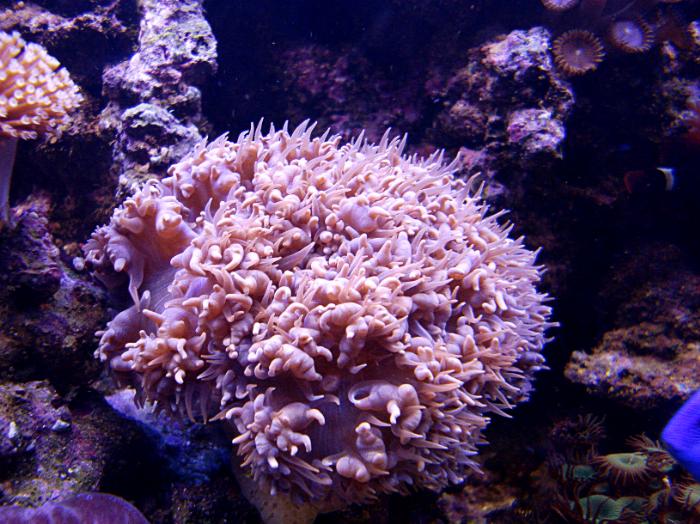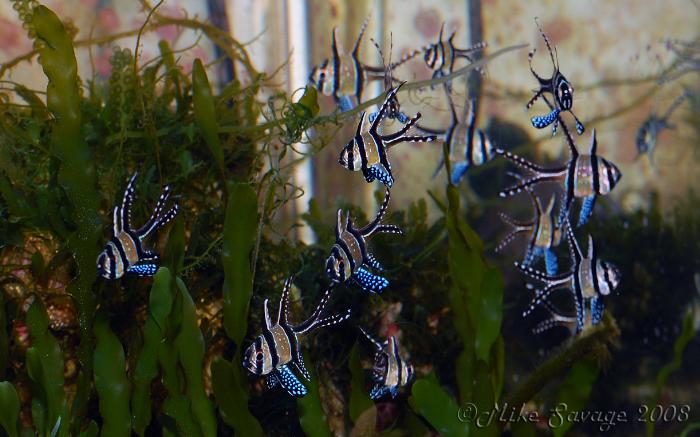Another pod popluation question
Printed From: Utah Reefs
Category: Specialized Discussion
Forum Name: Invertebrates
Forum Description: This is the place to ask questions about invertebrates.
URL: http://www.utahreefs.com/forum/forum_posts.asp?TID=78632
Printed Date: October 12 2025 at 8:56am
Software Version: Web Wiz Forums 12.03 - http://www.webwizforums.com
Topic: Another pod popluation question
Posted By: jsol12
Subject: Another pod popluation question
Date Posted: December 30 2015 at 9:21pm
|
I hear from some that no tank can self-sustain an adequate population of pods and so you need to add some to your tank periodically; others say yes you can. So, to further add confusion and get a variety of answers, which is it?? (I have a refugium, if that possibly helps with breeding.) ------------- 150gal/25gal sump Red Sea Max S650, started 3/28/15 |
Replies:
Posted By: phys
Date Posted: December 31 2015 at 12:46am
| I've had a population of pods for years. The only issue comes is if you have something that eats them faster than they can reproduce. |
Posted By: Mark Peterson
Date Posted: December 31 2015 at 8:41am
<I know I usually say too much. This went a lot longer than I thought.  I hope some find it useful.> I hope some find it useful.>To expand upon Paul's answer, a habitat can be created where an enormous population of bugs(zooplankton) can be sustained. The four most common zooplankton, including a common worm, are Amphipods, Copepods, Mysid Shrimp and Bristleworms, but there are a zillion other tiny bugs and worms we don't usually specify by name. It's not only the adult bugs and worms, but their spawn that also need to eat and grow. The habitat where this occurs was very important to me as a coral farmer. Along with a couple other factors, it allowed me to achieve maximum growth and color because it provided live food for the coral. Here are five points, but they are only a part of what I did to create that habitat: 1. Grow Macroalgae of various types in the display tank as well as the Refugium. Stands of Macroalgae, even small persistent spots of Hair Algae are areas of refuge for hoards of bugs. Though some may think of this as ugly, in nature this is what helps keep the entire natural ecological environment at it's best. Algae is the basis of all life on this planet. There is good reason why we are told in the story of creation that plant life was introduced to the earth on day four, before animals were added. 2. 90% feeding of frozen meaty foods including often unheard of products like Arctic Copepods, Fish Roe and Rotifers from http://www.brineshrimpdirect.com" rel="nofollow - Brine Shrimp Direct in Ogden . I feed dry processed foods typically only when I don't have time to feed frozen meaty foods. 3. Periodically feed single celled algae, commonly available in a frozen paste which is 100x easier than trying to grow it myself. Find it here: http://www.brineshrimpdirect.com/c175/c66/tahitian-blend-c79.html" rel="nofollow - http://www.brineshrimpdirect.com/c175/c66/tahitian-blend-c79.html Many marine invertebrate organisms eat single celled algae, from coral to Sea Cucumbers and worms to zooplankton. 4. Minimal skimming. A Skimmer removes the good with the bad. In old seasoned reef aquariums, a skimmer may not pull out as much skimate as earlier in that aquariums life. The reason for this is better understood when that aquarium's mature habitat is considered. There is a method to removing some (or perhaps even all) of the bad stuff without removing the good. Creating the zooplankton friendly habitat also includes the use of Activated Carbon and Activated Alumina, which, along with good algae growth allows for minimal skimming.  5. Feed the zooplankton at night. Have you ever seen the ocean at night. There are millions of species of bugs swimming about. Feeding coral swell up at night. Their feeder tentacles make them almost unrecognizable from their daytime appearance (see pic below). One food I like to feed at night before I go to bed is 50 Micron Golden Pearls, again sold by http://www.brineshrimpdirect.com/" rel="nofollow - Brine Shrimp Direct in Ogden . Hope this helps. Aloha, Mark   Above: Bubble Coral at night Below: One of my tanks which effectively fed baby Bangaii Cardinals.  ------------- Reefkeeping Tips, & quick, easy setup tricks: www.utahreefs.com/forum/forum_posts.asp?TID=9244 Pay it forward - become a paid WMAS member 
|
Posted By: Mark Peterson
Date Posted: December 31 2015 at 9:01am
|
One more thing that came to mind as I thought about the excellent comment by phys/Paul is this article about Herbivores vs. Carnivores in the old WMAS Sea Star. Here's the link: http://www.utahreefs.com/SeaStar/SeaStarJunePrint.pdf" rel="nofollow - http://www.utahreefs.com/SeaStar/SeaStarJunePrint.pdf ------------- Reefkeeping Tips, & quick, easy setup tricks: www.utahreefs.com/forum/forum_posts.asp?TID=9244 Pay it forward - become a paid WMAS member 
|
Posted By: jsol12
Date Posted: December 31 2015 at 9:11am
Thanks! I've been meaning to make a brine shrimp direct order, but after all my Amazon Prime shopping, paying $13 for shipping hurts  So, assuming I do all these things and have a good population going, how do I know when/if something is eating them faster than they reproduce? Based on the other pod post, looking at night to see if I can find them on the glass? Or when pod-eating fish don't seem to be pecking as much? I have a 150gal with live sand and mix of live/dry rock, and 25gal refugium full of chaeto and live rock. The only pod eating fish I have at this point is a little scooter blenny. Eventually I would like a red dragonet, mandarin, and maybe a leopard wrasse. Would this combo equate to decimating the pod population, or is that too hard to speculate? ------------- 150gal/25gal sump Red Sea Max S650, started 3/28/15 |
Posted By: Mark Peterson
Date Posted: January 02 2016 at 8:04am
If you're barking about paying for shipping when you're saving more than the shipping cost on the inexpensively priced amazing BSD food that you can pick up in Ogden or have shipped for only $13, then you're either in the wrong hobby or your're just not seeing the big picture. If you're a member of the Wasatch Marine Aquarium Society (not just a guest of this forum) and let them know, you may get a 10% discount. I'm gathering, from what you said about the tank that it is fairly new/young, like less than a year old, right? You can be certain there are plenty of bugs and worms in a young tank if mostly mature LR and LS were used in setup, large stands of macroalgae were allowed to grow (and periodically harvested) and the feeding described above was done for at least the last few months. If not, but adopt the above method it may be a few more months before you start to see(in no particular order): 1. the fat bellies of your satisfied carnivorous fish 2. the continual picking (not just roaming) because they actually have live bugs to pick at 3. the LR is fully colored up with algae, sponge and bacteria (see pic below) 4. the dry rock is becoming good LR, fully colored up (again, see pic below) 5. the coral is growing great and well colored 6. Spaghetti Worms are seen stretching out over the sand and a few Bristleworms come out at night 7. Bugs are seen anytime, day or night, in an upper layer of course sand next to the glass. If you would like me to evaluate your tank and give specific suggestions, please feel free to post here, PM or email some pics. My email is [email protected] Aloha, Mark  Can you see the rock which was initially added as wild collected LR and which started out as dry Utah Rock? Here's a clue. 80% of the rock in this pic began as clean Utah Rock only 16 months prior to this photo.   ------------- Reefkeeping Tips, & quick, easy setup tricks: www.utahreefs.com/forum/forum_posts.asp?TID=9244 Pay it forward - become a paid WMAS member 
|